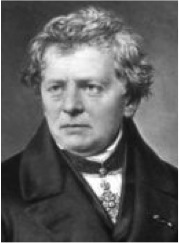Electrical Resistance

An electric conductor has freely moving electric charges. Often those charges are electrons. In metals the atoms have relatively fixe positions. You can imagine it as if the metal atoms sit in a grid. The electrons, however, are only weakly bound to their atoms; instead, they move freely inside of the atomic grid. They move in all directions. Because of this, metals are excellent electric conductors.
But the electrons often bump into the atomic torsos inside the grid. The result is that the electrons are hindered in their movement.
The electric resistance is a quantity in physics that describes how strongly the electric current inside of a conductor is hindered.
The symbol for the electrical resistance is R. Again, the symbol has a Latin origin. The word „resistere“ means to resist. The unit of resistance is ohm (Ω). Ohm was the surname of the German physicist Georg Simon Ohm (1789-1854).
By using Ohm's Law you can calculate the electrical resistance if you know the amperage and the voltage. Ohm's Law looks like this:

This model helps you to understand what happens inside of the conductor's atomic grid. You can see how the electrons bump into the atomic torsos and how they are thus hindered in their movement:

(the arrows of the electrons indicate their movement's direction)
